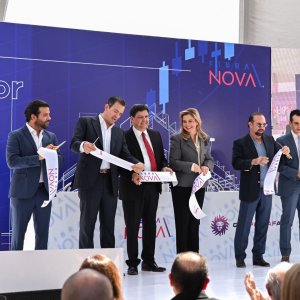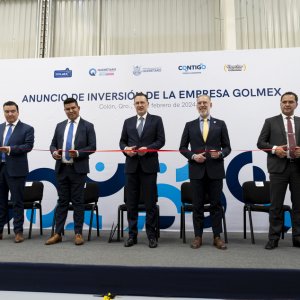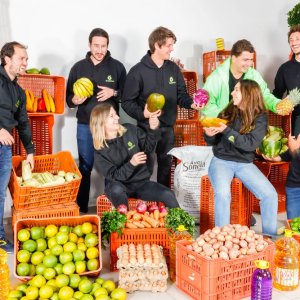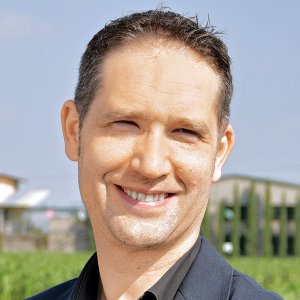Achieving Maize Systems Mitigation Potential Amid Steady Yields

STORY INLINE POST
The United Nations Emissions Gap Report 2022, released just before the 27th Conference of the Parties (COP27) to the United Nations Framework Convention on Climate Change (UNFCCC) held in Egypt last November, warned that the world is simply not on track to meet the ambitious yet essential goal of keeping global warming below 2°C by the end of the century as compared to pre-industrial levels, let alone the more desirable 1.5°C cap. This alarming report also found that climate-heating emissions from the global food system are set to double by 2050. At present, crop, livestock and forestry systems account for a quarter of global greenhouse gas (GHG) emissions. There is, therefore, an immense mitigation potential in the global food system that can help all countries meet their Nationally Determined Contributions to the UNFCCC.
In crop production, specifically, the main mitigation potential lies in improving nutrient management practices, which means applying optimal doses of fertilizer at the right time during the growing cycle to reduce leakage, land and water pollution, and nitrous oxide emissions (N2O) derived from excessive fertilizer use. In addition, improving agricultural management practices can also help cut emissions by reducing conventional tillage and associated fuel consumption emissions from agricultural machinery by adopting conservation agriculture practices.
Conservation agriculture is a production system based on three main components, which together can improve soil health and fertility in a wide range of conditions; its main principles are: (1) reduce tillage to a minimum to prevent soil degradation from erosion and loss of structure and organic matter; (2) leave a permanent cover of a living crop, or mulching with crop residue, to protect the soil from erosion, conserve water and improve fertility; and, (3) diversify crops with crop rotation, polycultures, relay cropping or other diverse practices to reduce weeds, diseases and plagues, and to improve biological fertility.
Today, Mexico is one of the Top 10 global emitters that can greatly contribute to mitigating global warming by transforming agricultural practices in regional hotspots, where nitrogen use efficiency for crop production can improve significantly. This is particularly true for the high production maize producing regions, where Mexican farmers have an opportunity to increase nitrogen (N) use efficiency to reduce waste and achieve savings on production costs without compromising yields. A recent study from a group of researchers at the International Maize and Wheat Improvement Center (CIMMYT) and partners estimates that, at present, Mexico’s total maize output could achieve an N2O emission reduction potential of 33 percent by reducing excess N use or application in maize fields across the country, especially in the high production areas.
There are, of course, several enabling conditions that can help achieve this mitigation target without putting farmers’ productivity and the overall country’s food security at risk. Crop production systems vary greatly so there are no one-size-fits-all recipes or prescriptions to give to farmers who are currently over-fertilizing their fields and increasing GHG emissions. To achieve optimal fertilization rates, it is important to offer expert advice to growers on how to achieve the 4Rs in agriculture, which stand for the right source, right timing, right placement and right application rate of the nutrients or fertilizers that crops need to achieve their yield potential. Some of the tools and best practices that we have developed at CIMMYT to offer that expert advice include soil nutrient analyses, precision leveling of crop fields, remote sensors for estimating real-time crop nutrition requirements and new maize varieties with improved N use efficiency traits.
CIMMYT and research partners have also found that Mexico has a national mitigation potential of 7.91 million tons (Mt) of carbon dioxide (CO2) from crop production, which could cut associated emissions by 60 percent. More importantly, this mitigation potential can be achieved with net benefits for farmers if the crop management practices and technologies described above are effectively implemented. In other words, the rewards for transforming Mexico’s crop systems by scaling up conservation agriculture-based sustainable intensification practices outweigh any actual costs or risks associated with the transition. However, Mexican farmers and field technicians need science-based solutions, enabling policies and reliable advisory services to reap those rewards without compromising their productivity.
CIMMYT aims to help deliver the transformation of Mexico’s maize systems by implementing collaborative agronomic research with local partners in field trials, by setting up side-by-side comparisons of new and conventional practices on farmers’ fields, and by following up on extension areas, where groups of farmers learn how to adopt new practices on the plot of a collaborating farmer. In these field trials, plots and farms, or research platforms, modules and extension areas, respectively, local farmers participate in the design, development, evaluation and promotion processes of sustainable farming practices. The new, co-created sustainable practices greatly improve soil health, put a limit to excessive and unnecessary fertilization, and cut the associated GHG emissions.
Bram Govaerts is Director General a.i. and CEO at CIMMYT. He is an international authority in maize and wheat cropping systems who works for a successful transition to sustainable intensification of small-scale farming in Africa, Asia and Latin America. Govaerts advises public, private and social organizations worldwide and is an active member of research groups and programs including the Sustainable Development Solutions Network, the Knowledge Systems for Sustainability platform, the A. D. White Professor-at-Large program at Cornell University, and the American Society of Agronomy.
























